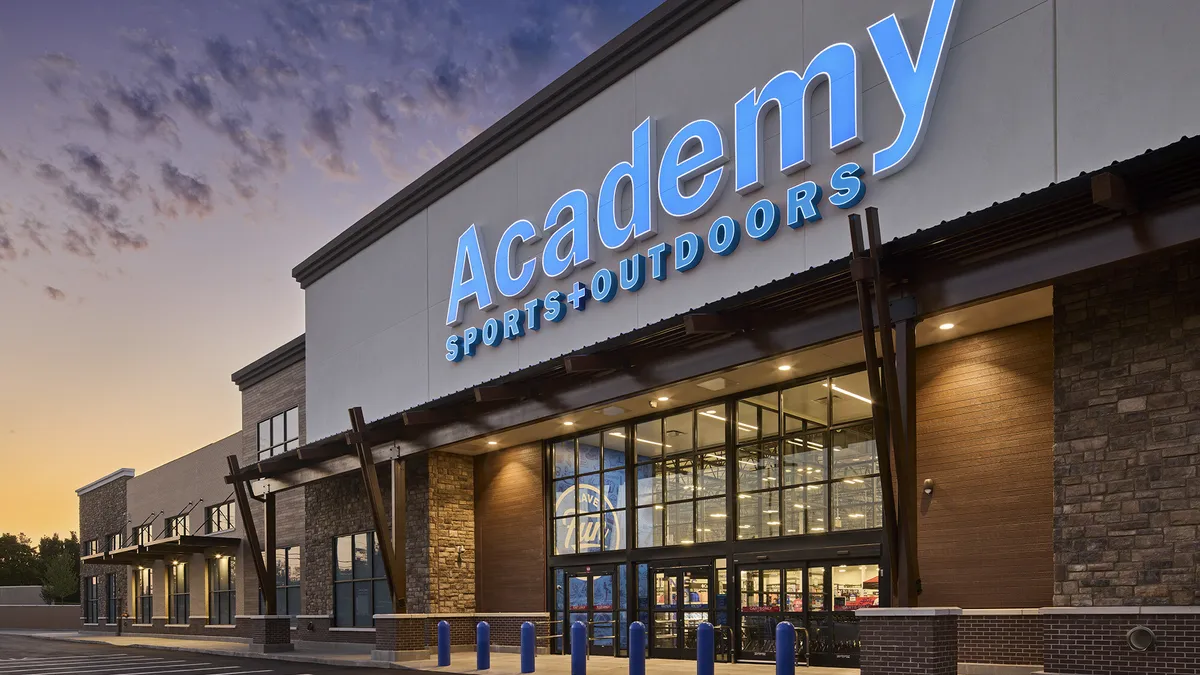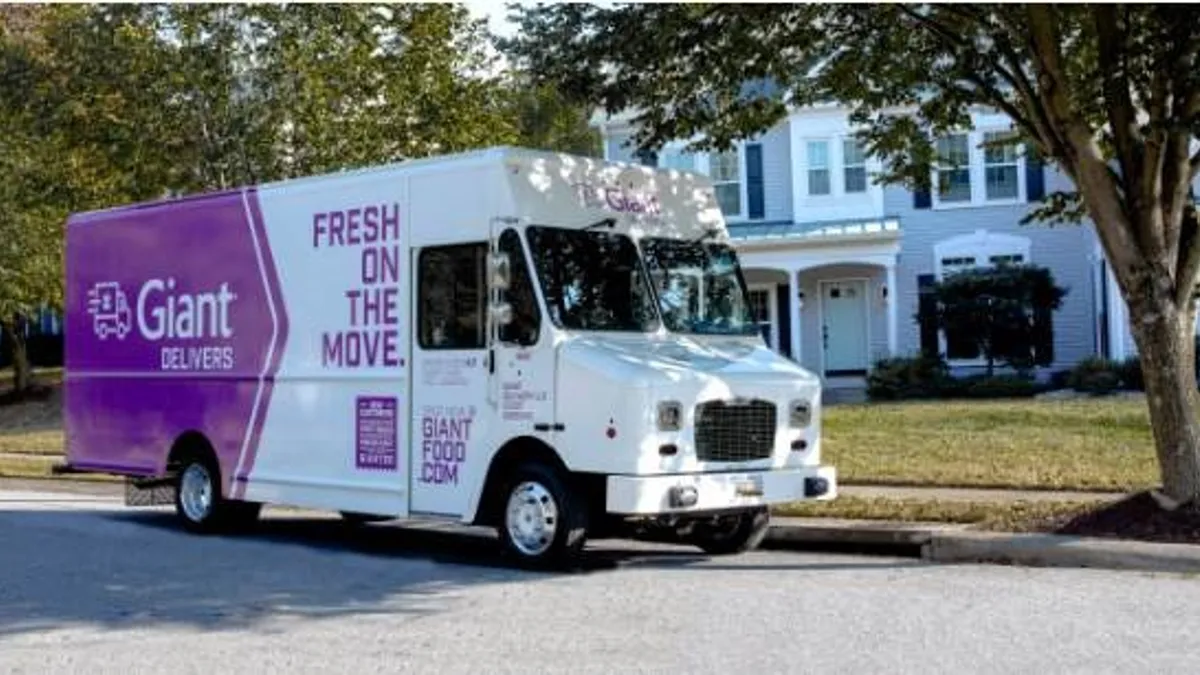For the last five years or so, there’s been a battle waging between the two highest priorities for consumers when it comes to e-commerce: fast and free.
"Consumers love fast. They love free. They overwhelmingly prefer free, but their expectations are that free gets faster," Ryan Kelly, vice president of global e-commerce marketing at FedEx, told Supply Chain Dive.
In a major shift in mindset for the industry, more and more supply chain managers are directly serving the consumer.
"They have the supply chain working on customers. That’s a real leap for the folks that were trained in process redesign and engineering," APICS CEO Abe Eshkenazi told Supply Chain Dive.
Fulfillment is marketing, operations and customer service all in one, and that has changed the game for e-commerce companies and those who provide fulfillment service to them. But it is also a major draw for customers. They may choose which e-tailer to order from based on shipping cost or speed.
Small means simple no more
FedEx, like many major third-party logistics providers (3PLs), has developed fulfillment services to more completely help clients. Kelly, who has been with FedEx for a decade, told Supply Chain Dive the typical FedEx Fulfillment customer is changing, and their needs are changing too.
"We used to think that small customers had relatively simple needs and as you grew up and got bigger, you would have much more complex needs. What we are seeing is that customers, so much earlier in their life cycle, are having way more complex supply chain needs and demands. They’re facing challenges sooner in their maturity," he said.
New customer discovery methods and social media have played a big part in this shift. Social media can drive overnight popularity for a relatively young product line or even a single product. Combine that with the immense number of selling platforms available to even the smallest sellers, and order fulfillment becomes more than many small teams can manage, Kelly explained, especially since a single tweet from a celebrity can explode demand overnight.
"Solutions that we have provided to large, Fortune 50 retailers in a dedicated environment, you're seeing those needs asked for much, much earlier. It’s almost shocking how early you see them," said Kelly
At the same time, the internet has been a great equalizer for brands, putting small companies on equal footing with large, global players, which expectations to match.
"So many of these relatively small merchants are competing with really, really large companies and so they have got to meet the consumer expectations that have been enabled in the marketplace," said Kelly.
Fine-tuning stockouts in the omnichannel age
Another way retailers are meeting consumer demand for the fast part of "fast and free" is through omnichannel distribution.
The line between stores and warehouses when it comes to e-commerce is slowly breaking down. A single e-commerce order consisting of five items may arrive as five different deliveries from five different locations — all in an effort to deliver as fast as possible. This means, however, that stocking a store is more complicated than it once was when the only driver of sales was foot-traffic. Combine that with a growing trend toward smaller inventories overall, and it’s a recipe for stockouts.
Earlier this year, an IHL Group study found retailers are leaving roughly $1 trillion in consumers’ pockets from stockouts. Shoppers encounter out-of-stocks in as many as one-in-three shopping trips overall and one-in-five times when shopping for food and medicine.
The study says that better vendor management and incentives can go a long way to recouping some of that $1 trillion, but the right digital tools also have a major role to play.
"Having a single enterprise order management system that supports inventory regardless of its location and channel for delivery is crucial in today's retail environment," IHL researchers wrote. "The enterprise order management solution needs to be smart enough to optimize the shipping for the greatest margin/sales opportunity. While one is more expensive on this sale, it avoids missing another sale by creating an out-of-stock."
RFID can also help, according to the study. But so can limiting the total number of SKUs — another major trend. Lowe ’s new CEO Marvin Ellison is tackling this battle right now and recently acknowledged stockouts run deeper than simple replenishment.
"We are saying okay, we have an issue with being out of stock, let’s look at the algorithm of replenishment ... let’s not just throw more payroll at it," he said on a recent earnings call. Ellison calls the solution "rationalizing."
At Target, the word is "localization." Sending stores smaller, customized shipments from nearby "flow centers" keeps stores in stock with only what they need — in theory — and enables a store-focused fulfillment strategy with a thriving buy-online-pickup-in-store option.
The key is that the inventory does not need to be abundant if it is in the right place at the right time.
Augmented Reality
To fulfill the "fast" mandate of "fast and free," shippers have a need for speed not just in transportation, but in the warehouse while an order is still in their control. It’s anybody’s guess if skilled or unskilled labor is harder to find in the current strapped labor market, but augmented reality technology is being deployed to up the speed and skill of fulfillment workers by some of the leading names in the game.
DHL Supply Chain plans to expand its augmented reality glasses pilot programs to various industries in the U.K., Europe and the U.S. The smart glasses help shop floor pickers determine where to place goods in a cart.
Wearables — augmented reality technology is one type — are on the rise in warehouses and MHI expects 70% of facilities to adopt them in the next five years. Augmented reality delivered through some form of glasses-like head-wear can help pickers get to the right location and pick the correct item faster with greater accuracy.
DHL’s initial augmented reality pilot in the Netherlands in 2014 also showed that augmented reality wearables increased worker satisfaction.
Accounting for global sales
Fast and free doesn't stop at the border. As global economies continue to integrate, digitally, companies are also learning what it takes to fulfill orders to new markets.
As an example, Canada is a natural market for American shippers for fairly obvious reasons: close proximity, shared language (for the most part) and cultural similarities.
A UPS study suggests merchandise is more likely to flow north over the border rather than south. In fact, 83% of Canadian online shoppers make purchases from international retailers compared to just 47% of American shoppers. And all shoppers worldwide expect speedy delivery, regardless of the origin of their order.
"We do ship a tremendous amount of product north of the border," said Kelly.
Apart from building 3PL capability to get parcels from the U.S. to Canada faster, Kelly said part of the key to easing orders across the border is the digital tools that simplify the taxes, duties, and transportation costs for both sellers and consumers — whether that task falls to the online marketplace, the 3PL or both.






















